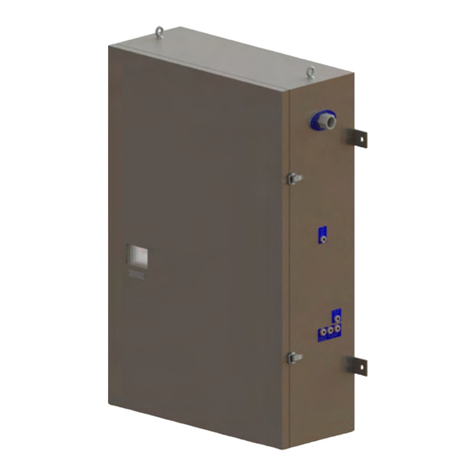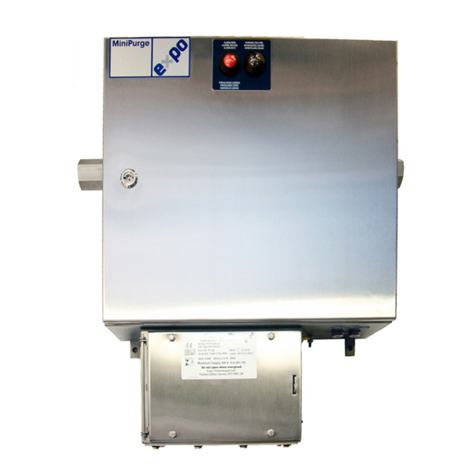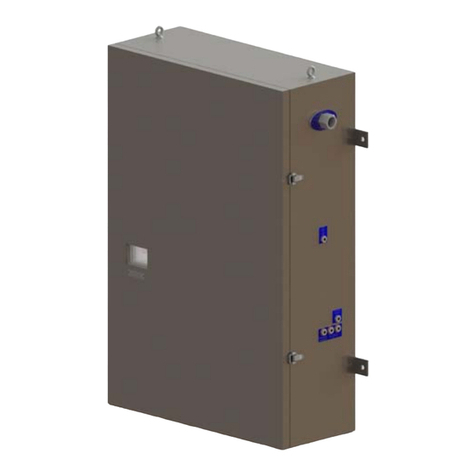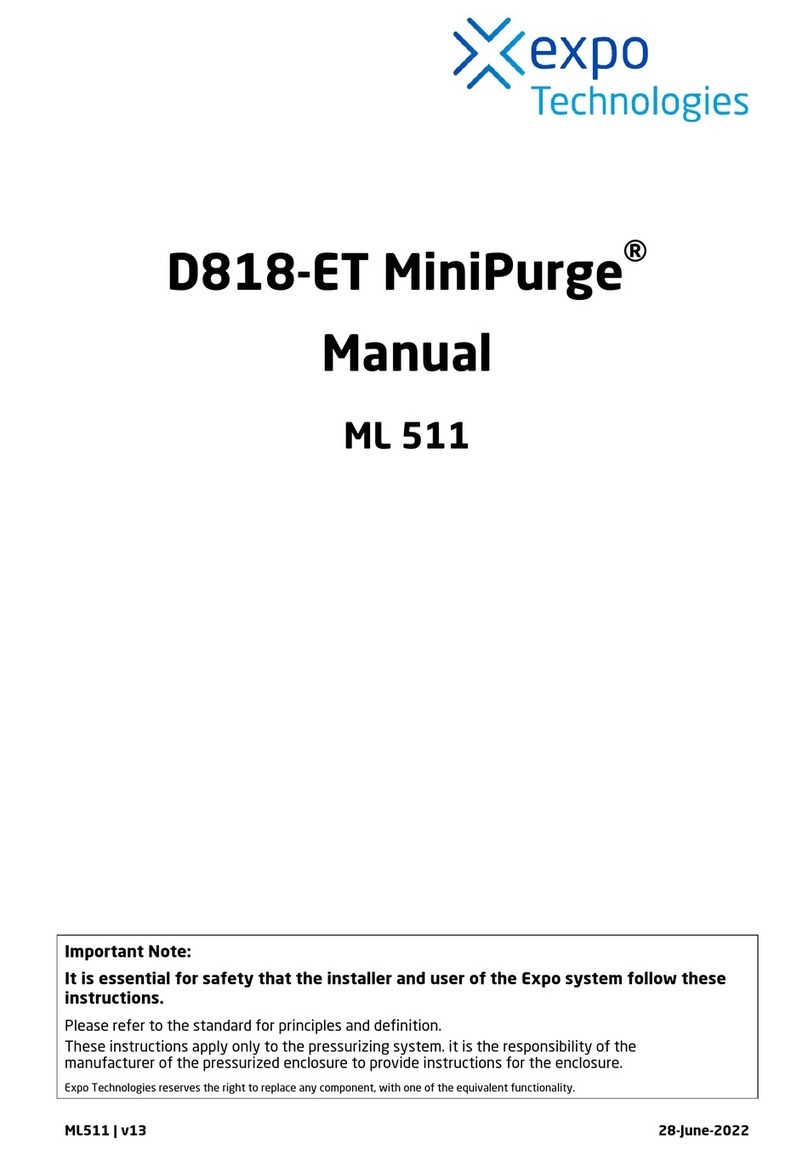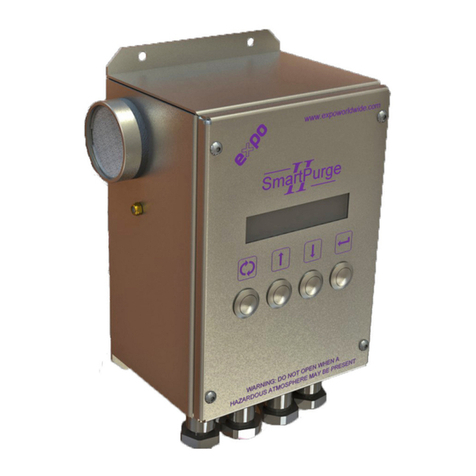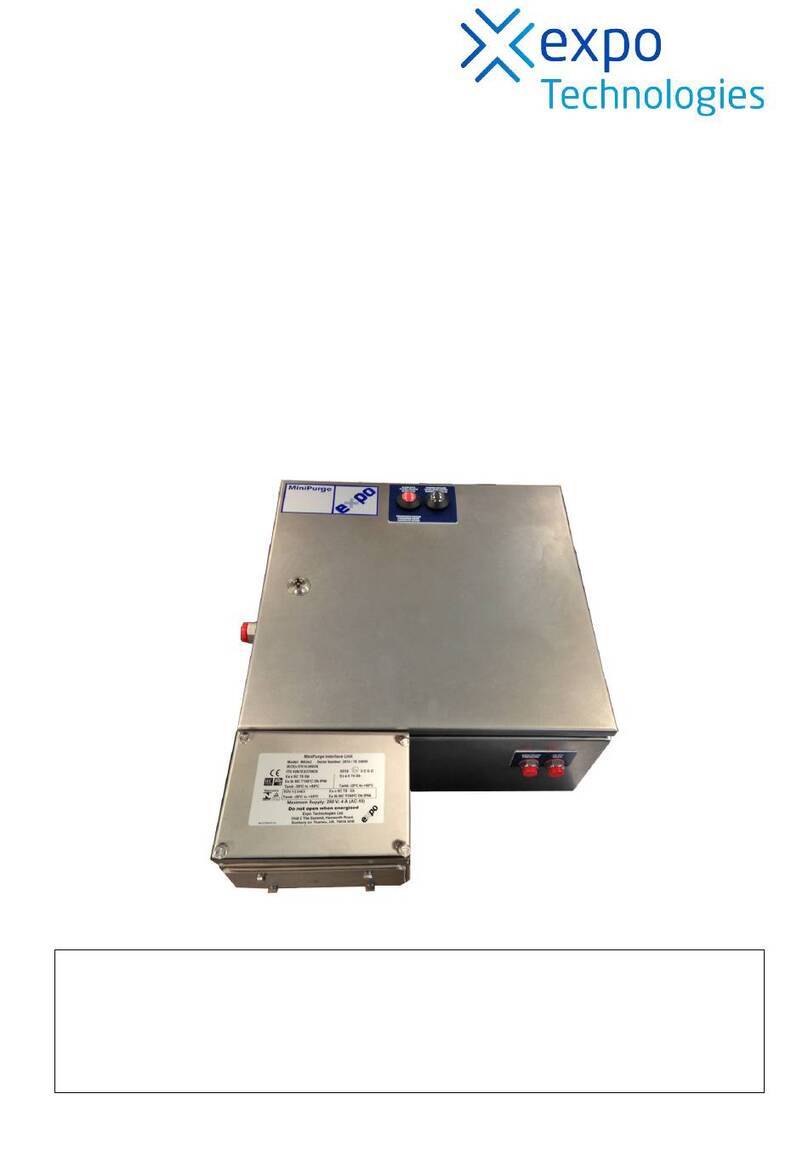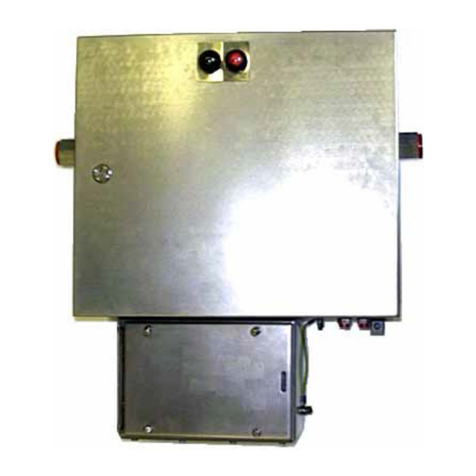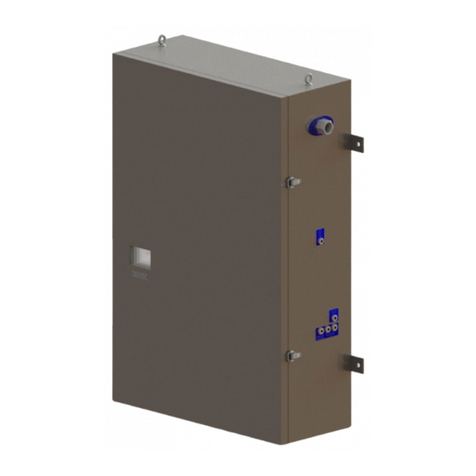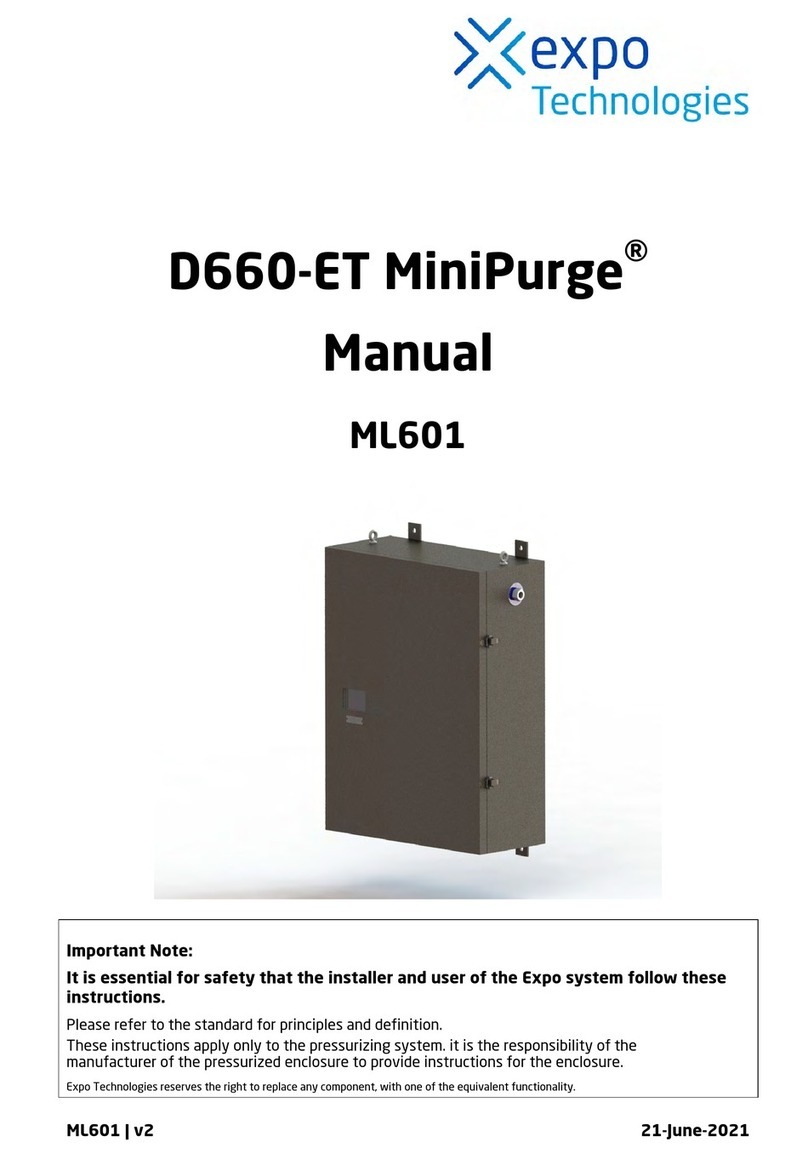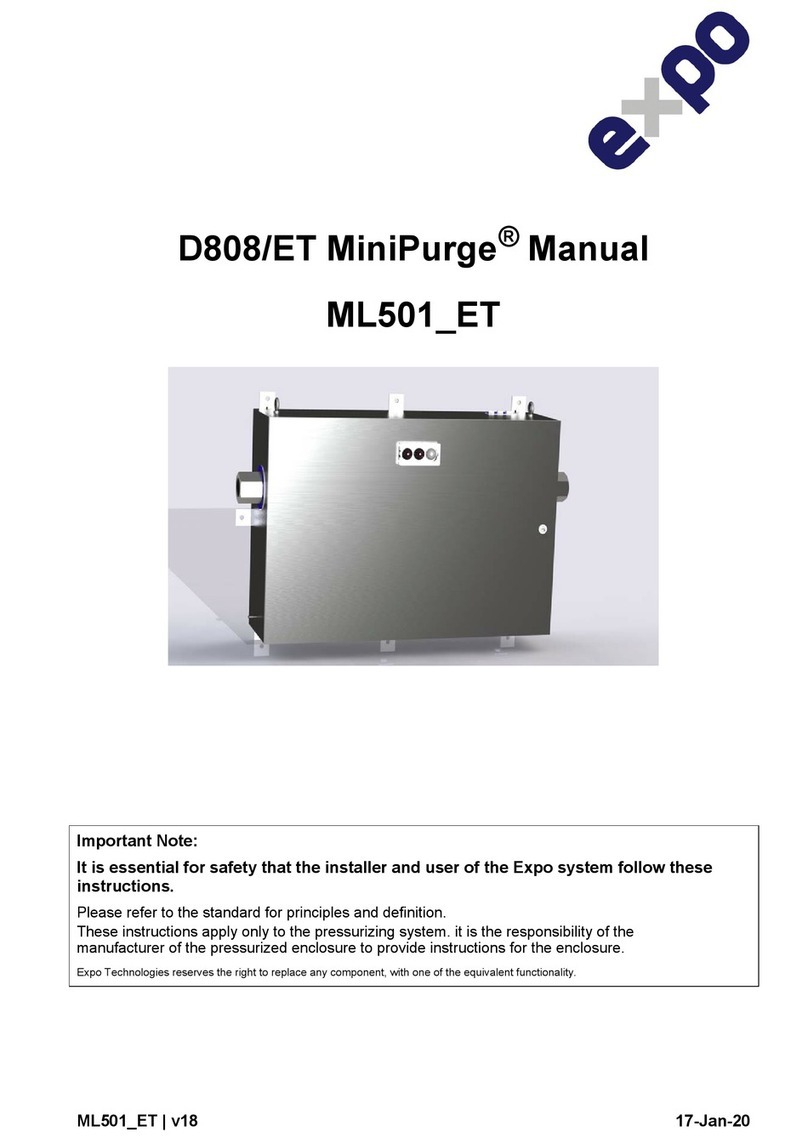
Expo Technologies Limited Page 2 of 8 ML384 Issue 05 –04.06.15
of the Minimum Pressure Sensor or to replace the SA with
one of another size. (** denotes the nominal thread size of
the SA body)
- For low flow rates, the Outlet Orifice may be
incorporated within the Relief Valve making use of the
existing Spark Arrestor. The Relief Valve will then have a
suffix /CF**, where ** is the orifice size in millimeters.
Section 1 Installation of the System
The installation of the MiniPurge system, the
protective gas supply, any alarm device should be in
accordance with the requirements of NFPA 496.
The electrical installation associated with the
MiniPurge system shall conform to the local codes
and the relevant clauses of NFPA 496.
All electrical parts of the MiniPurge system shall be
installed in accordance with the applicable
requirements of the NEC for USA and CEC for Canada.
1.1 Installation of the Expo LC and CFHP Systems
1.1.1 The Expo system should be installed either directly
on or as close as possible to the Pressurized Enclosure
(PE). It should be installed so that the system indicators
may be readily observed.
1.1.2 All parts of any system carry a common serial
number. If installing more than one system, ensure that
this commonality is maintained on each installation.
1.1.3 Any tubing, conduit and fittings used to connect to
the PE should be metallic, or, if non-metallic, conform to
the local codes for flammability ratings. No valve may be
fitted in any tube connecting the Expo system to the PE.
1.1.4 The user or manufacturer of the PE shall determine
the volume of the PE, the necessary purging volume, and
the time to be allowed for purging, using the chosen Expo
system purging flow rate. It is the user's responsibility to
verify or enter this data on the PE and/or Expo system
nameplate. Ask Expo if in doubt.
Example calculations:
a) If the PE external dimensions give a volume of 20 cubic
feet, and it is NOT a motor, multiply the volume by four to
get the Purging Volume i.e. 80 cubic feet. Divide the
Purging Volume by the purge rate e.g. 32 cubic feet per
minute, and round up to the next even minute above, i.e.
Purging time would be 4 minutes.
b) If the PE is a motor, multiply the internal free volume by
ten to get the Purging Volume. For the example above,
Purging time would be 8 minutes.
For Type “Y” or “Z” Pressurization, the protected
equipment may be permitted to be energized immediately
where 25 Pa (0.1”WC) exist in the enclosure and the
enclosure is known to be below the ignitable concentration
of combustible material.
1.1.5 If the PE contains an internal source of release of
flammable gas or vapor, the procedures for assessment of
the release as given in NFPA 496 shall be observed.
1.1.6 User must take precaution if abnormal release of
flammable gas or vapor within the enclosure can affect the
external area.
1.1.7 Where a release of flammable gas or vapor
within an enclosure can occur either in normal
condition or abnormal operation, protection shall be
provided by one of the step as specified in NFPA 496.
For more information on enclosure containing internal
source of release or enclosure containing an open
flame, contact Expo Technologies.
The user must verify that the specification of the Expo
system e.g. pressures, continuous flow (dilution) rate
and type of protective gas are correct for the specific
application. If an inert protective gas is required, the
Expo Control Unit can be specified to have
Compressed Air for the control logic and Inert Gas for
the protective gas to minimize Inert Gas consumption.
1.1.8 More than one PE can be protected by a single
system. If PEs are connected and purged in “series”
e.g. “Daisy Chained”, the Outlet Orifice must be fitted
on the last enclosure with the Purge Inlet to the first
enclosure. The bore and length of the tube or conduit
used to interconnect the enclosures is critical and will
determine the maximum pressure experienced by the
first enclosure in the series. Advice on sizing can be
obtained from Expo Technologies. The test pressure
for all the enclosures should be 3 times the pressure
inside the first enclosure when purging is taking place.
If PE’s are to be connected in parallel each enclosure
must have its own outlet Relief Valve, Purge Flow
Sensor and Pressure Sensor. System “Models” can be
mixed e.g. Model LC for one enclosure and Model CF
for another. An example would be a Gas
Chromatograph instrument. Expo systems with this
facility have option code “TW”.
1.2 Quality and Installation of the Pressurizing
Air or Inert Gas Supply
1.2.1 The source of the compressed air must be in a
non-classified area. Inert gas may be used as an
alternative to compressed air.
1.2.2 All pipe connection for the protective gas shall be
protected from mechanical damage; where the source
of the compressed air intake line passes through a
classified location, the construction shall be of non-
combustible material, and designed to prevent leakage
of flammable gases, vapours, or dust into the
protective gas. It must be protected against
mechanical damage and corrosion.
1.2.3 Unless a supply shut-off valve has been
specially fitted within the Expo system, a valve with the
same, or larger, thread size as the Control Unit inlet
fitting shall be fitted externally. In addition, for "Y" and
"Z" Pressurization systems, a suitable indicator shall
be provided:
